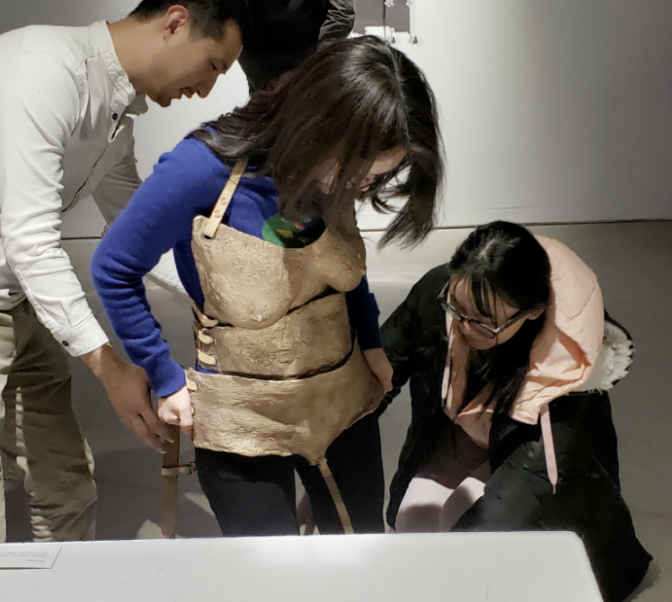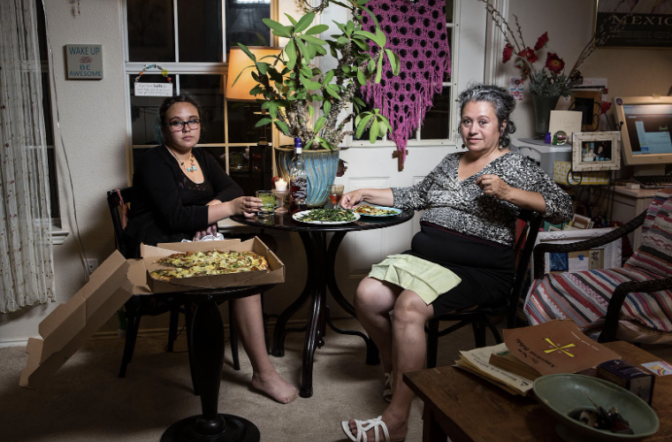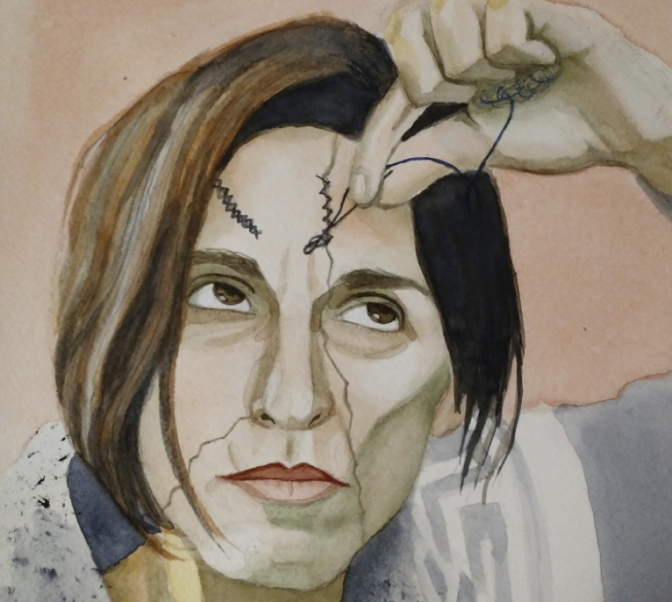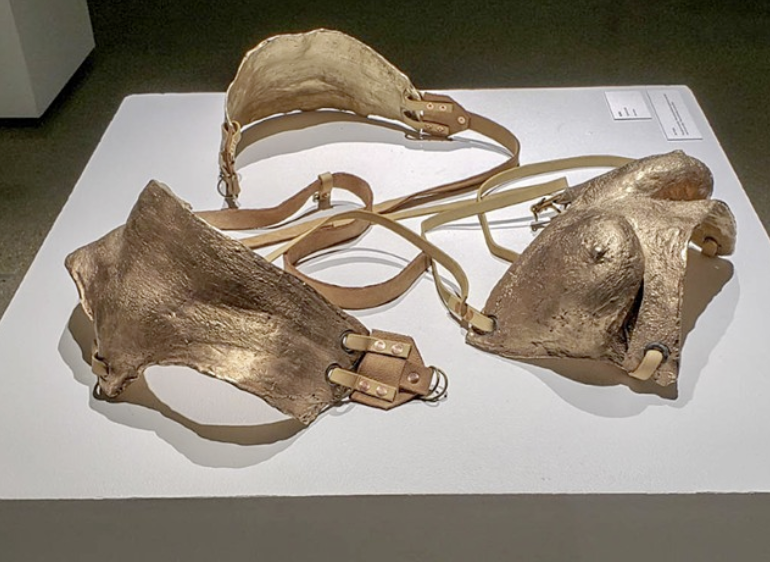Editor’s Note: This article contains mentions of sexual violence.
“Women’s Work” opened at Garver Feed Mill as part of their annual femme-focused food and arts festival, dubbed the “Femmestival,” featuring artwork by six women, delving into the complexities of womanhood.
Intending to inspire and support women, the gallery is open to the public and curated by Bethany Jurewicz. Featuring artists Lois Bielefeld, Sharon Bjyrd, Kel Mur, Chele Ramos, Evie Richner and Ruth Vander Horck.
Mur’s bronze and leather interactive sculpture, “Try Me On,” is three sections of the front of a woman’s upper body, segmented into bust, waist and hips. The pieces of the body are separated and lay on the table apart. The viewer is encouraged to interact with this art piece and can wear these pieces like armor. They can carefully put the segments together and make it “whole.”
“At first, its weight is tolerable but starts to become more uncomfortable and increasingly cumbersome the longer the participant wears it,” Mur said.
This piece can be interpreted in many ways.
I saw the weight of the pieces symbolizing the burden of being a woman and the weight they carry upon their shoulders. I saw the broken pieces as showing how our bodies can be torn apart and then put back together for the entertainment of others.

“Try Me On” is charged with the thought that female-presenting bodies are communal property.
“Female and femme-presenting people are expected to change roles as easily as they change clothes, bending to the temperament of the situation,” Mur said. “Additionally, these castings are not sealed so their patinas will change the more they are touched and left exposed. The work is armor-like and will not actually be harmed in being handled, but it is certainly not unscathed. Regardless, the viewer is encouraged to play.”
This shows women, though strong, can be molded and shaped, for better or for worse like scars from an injury — and it shows women should be treated with care.
Mur also said some traumas she had inform her work, including sexual violence and workplace discrimination.
“I’ve been passed over in a round of introductory handshakes in professional situations more times than I can count,” Mur said. “I’ve been cat-called, sexually harassed, sexually objectified and men have forcibly tried to put their hands down my pants.”
Bielefeld is a photographer in Milwaukee and her print displays two women, a mother and daughter, sitting at a small table eating a meal as a part of her “Weeknight Dinners” collection.
She always loved food and growing up one of her chores was cooking meals for her family on the weekends.
“I could make whatever I wanted but I needed to follow a recipe, write and give my parents the ingredient list and then make it for the family … I wonder if, through this project, a small element in me is chasing the void of my own childhood family mealtimes,” Bielefeld said.
The photo is large enough so the viewer can see the several small details in it— a pink crocheted heart drapes from the window, a lively green plant is the centerpiece and red flowers are in the background. There is an old chunky computer and a bible on the table.
The photo piques the interest of the viewer and makes one wonder about the backstory of the subjects photographed and their everyday lives, as well as seeing how unique a house can be. Why is one of the women in the photo not smiling? Why does the mom not have a partner?

“The American ideal is to eat a home-cooked meal as a family around a table with no distractions while talking about the day,” Bielefeld said. “When thinking about this project I was very interested in this ideal versus the reality, which has very much so played out in my own mealtimes.”
She talks about her family’s mealtime traditions now and how like many families, they tend to get so busy it is hard to have everyone at the same table at the same time.
She also explains the process of how she made this project. She captured people off guard in their average dinner and as their most authentic selves. We get a feeling of how unique each of our mealtime routines looks.
“I knew that I was interested in observing people’s habits and nightly rituals,” Bielefeld said. “The project specifically is shot Monday through Thursday evenings, as I wanted to capture habits and rituals that are shaped by the weeknight time crunch rather than the weekends when people have more time.”
Ramos uses a variety of tools such as watercolor, ink and oil paint. As a portrait artist, she draws many self-portraits like the one below, titled “Cracking up.”

Here, Ramos has her hand against her head like she has a headache. In another, she is taste-testing her food, taking a sip out of a large metal ladle. In another art piece, there are cracks in her face and a crack that runs from the top to the bottom of her face. She attempts to stitch herself back together.
“The art I am sharing is about my own experience with human emotion, pain and healing,” Ramos said. “Sharing my art helps me to have a voice, participate in the world around me, start important conversations, inspire others and hopefully make a difference in other’s lives.”
It was very profound and inspiring to learn more about the artists themselves and is a must-see for art enjoyers in Madison.
The gallery opened Jan. 25 and will remain open until March 3 at Garver Feed Mill, according to the event’s posting.


